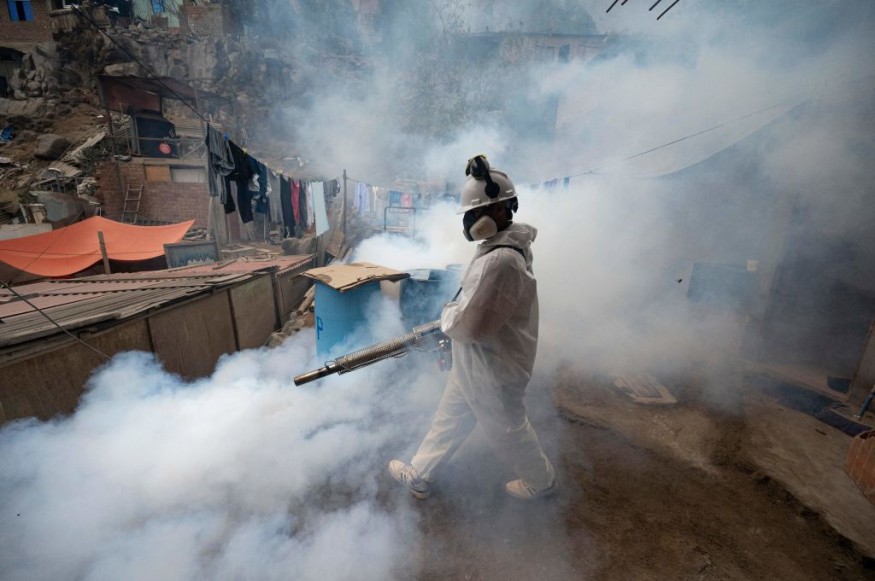Peru Dengue Outbreak: Almost All Regions Battle Outbreak of Mosquito-Borne Disease

Peru is grappling with the rapid spread of dengue, a mosquito-borne virus that poses significant health risks. The number of new cases and fatalities attributed to dengue in the first four and a half months of 2023 has shattered previous records, signaling a concerning trend, according to Peru Reports.
As of May 23, the National Center for Epidemiology, Disease Prevention and Control (CDC) of the Ministry of Health (Minsa) reported 89,654 documented dengue cases nationwide, with 103 lives tragically lost. Piura, Lima, Ica, Loreto, Ucayali, and Lambayeque emerged as the areas hit hardest by the outbreak.
Comparing the data to previous years, dengue fever cases have surged by 27.82% during April and May of 2023 compared to the 68,290 cases recorded in 2017, and there has been a 38.19% increase from the 63,168 cases reported in 2022.
Despite the alarming numbers, the Ministry of Health (Minsa) reported on May 22 that specific locations show a decrease in cases while others have reached a plateau. The regions experiencing a decline include Piura, Lambayeque, Ica, La Libertad, Lima, and Callao, as stated by the ministry.
To combat the outbreak, extensive efforts have been undertaken by the government in collaboration with regional and local authorities and various institutions. Larval control and fumigation measures have been implemented, resulting in the protection of over 6.24 million people.
READ NEXT : Bird Flu Outbreak in Peru
Peru Dengue Outbreak Could Mean Something Else
The rapid spread of dengue in Peru serves as a warning for tropical countries, where mosquito-borne diseases are increasingly prevalent due to the growing frequency of warm and rainy weather, which provides ideal conditions for mosquito breeding, per the Washington Post.
Dengue poses severe health risks, including extreme fever, organ failure, and even death. The World Health Organization (WHO) classified dengue as a "major public health problem" for the Americas region in March, highlighting the alarming increase in reported cases from approximately 500,000 in 2000 to 5.2 million in 2019.
Northern Peru experienced record rainfall, coinciding with the onset of the latest dengue wave in March. Raman Velayudhan, head of the WHO's program on Neglected Tropical Diseases, emphasized the role of climate change during a news conference in April, stating that increased precipitation, higher temperatures, and elevated humidity create favorable conditions for mosquitoes.
The El Niño weather pattern, a recurring phenomenon characterized by the formation of warm water off the Pacific coast of South America and the weakening of trade winds, has further exacerbated the dengue pandemic.
This climate pattern, which occurs every three to five years, precedes La Niña, a period of cooler ocean water and stronger winds.
In Peru, climate change has amplified the impact of El Niño, leading to more intense downpours, according to predictions from the U.S. Environmental Protection Agency.
Warmer ocean temperatures cause increased evaporation, and when the moisture-laden air reaches land, it can result in heavy rainfall occurring all at once.
Peru Has the Lowest Public Healthcare Spending Among Latin American Countries
The Peru dengue outbreak has surpassed projected death tolls, overwhelmingly straining the country's healthcare infrastructure.
Despite a surge in reported cases, Peru's public health spending falls significantly behind other major economies in Latin America, La Prensa Latina noted.
The nation's underinvestment in healthcare has resulted in the world's highest per capita death rate from dengue, underscoring the critical need for sufficient funding to support the healthcare system.
In response to the crisis, Rosa Gutierrez, the Minister of Health in Peru, has allocated 50 million soles ($14 million) towards combating dengue. Health officials maintain that the situation is being controlled and anticipate a decline in new cases within the next two weeks.
However, the possibility of another unprecedented pandemic cannot be ruled out.
To prevent the recurrence of such a tragedy annually, Gutierrez made a plea last week, urging concerted efforts to improve water and sewage systems in Peru's slums. Recognizing the fundamental role of infrastructure in disease prevention, she emphasized the importance of addressing these underlying issues to mitigate the risk of future outbreaks.
READ MORE : Argentina Eases 'Moring-After Pill' Access
This article is owned by Latin Post.
Written by: Bert Hoover
WATCH: Health workers fumigate homes to curb dengue outbreak in Peru - From Switch TV News
Subscribe to Latin Post!
Sign up for our free newsletter for the Latest coverage!
© 2026 Latin Post. All rights reserved. Do not reproduce without permission.















